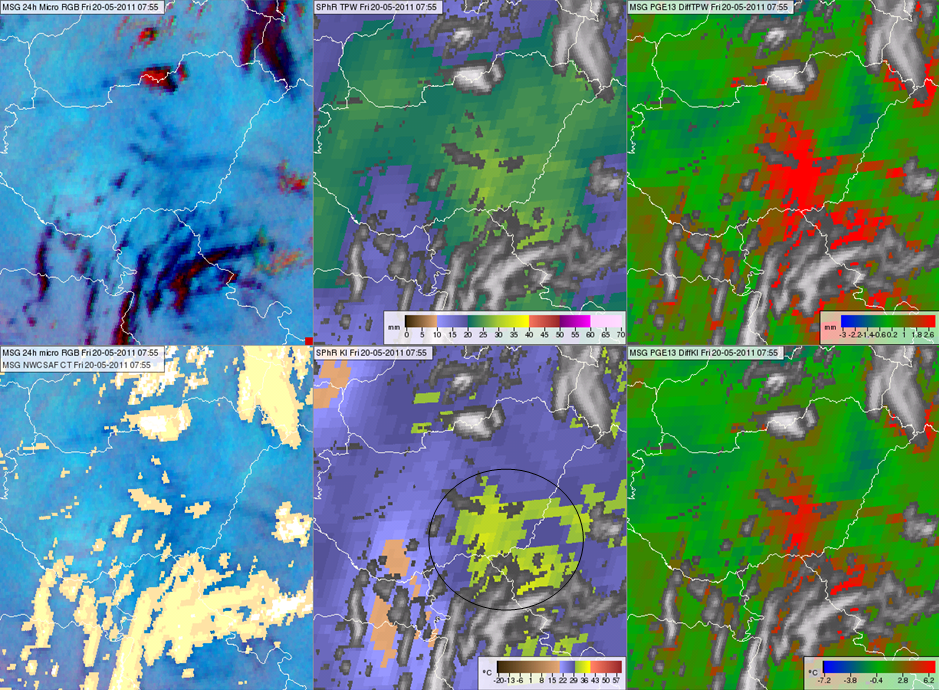Exercises
Have a look at Fig. 23 and answer the question:
Figure 23: Satellite images and SPhR products for 20 May 2011, 07:55 UTC. 24 hour Microphysics RGB (top left), satellite-retrieved TPW (top middle), difference between the satellite-retrieved and the ECMWF forecasted TPW (top right), 24 hour Microphysics RGB overlaid with the cloud mask (bottom left), satellite-retrieved K-Index (bottom middle), difference between the satellite-retrieved and ECMWF forecasted K-Indices (bottom right).
Question
Are the satellite-retrieved environmental parameters reliable in the circled area? You can also look at the 24 hour Microphysics RGB animation (between 15:25-12:10 UTC).
The correct answers is NO.
For pixels containing undetected clouds, the SPhR algorithm retrieves unreliable (usually too high) water vapor content and atmospheric instability (see Chapter 4). The indicated area is partly covered by undetected thin cirrus clouds, which can be seen in the bottom left panel of Fig. 23. Both very thin cirrus clouds and areas with high low-level water vapor content are dark blue in the 24 hour Microphysics RGB images. In this case the dark blue color is caused by undetected thin cirrus clouds. The typical structure of cirrus clouds is recognizable in Fig. 23, and even more clearly in the animation showing the movement of these structures.
Have a look at Fig. 24 and answer the question:
Figure 24: Satellite images and SPhR products for 16 August 2007, 11:10 UTC. 24 hour Microphysics RGB (top left), satellite-retrieved TPW (top middle), difference between the satellite-retrieved and ECMWF forecasted TPW (top right), 24 hour Microphysics RGB overlaid with the cloud mask (bottom left), satellite-retrieved Lifted Index (bottom middle), difference between the satellite-retrieved and the ECMWF forecasted Lifted Indices (bottom right)..
Question
Are the satellite-retrieved environmental parameters at the area indicated by the circle contaminated by thin cirrus clouds? You can also look at the 24 hour Microphysics animation (between 06:25-14:40 UTC).
The correct answers is NO.
The area is not covered by undetected thin cirrus cloud. There is no sign of typical cirrus cloud structure or movement. The darker blue area in the 24 hour Microphysics RGB (left panels) is due to the higher low-level water vapor content.

